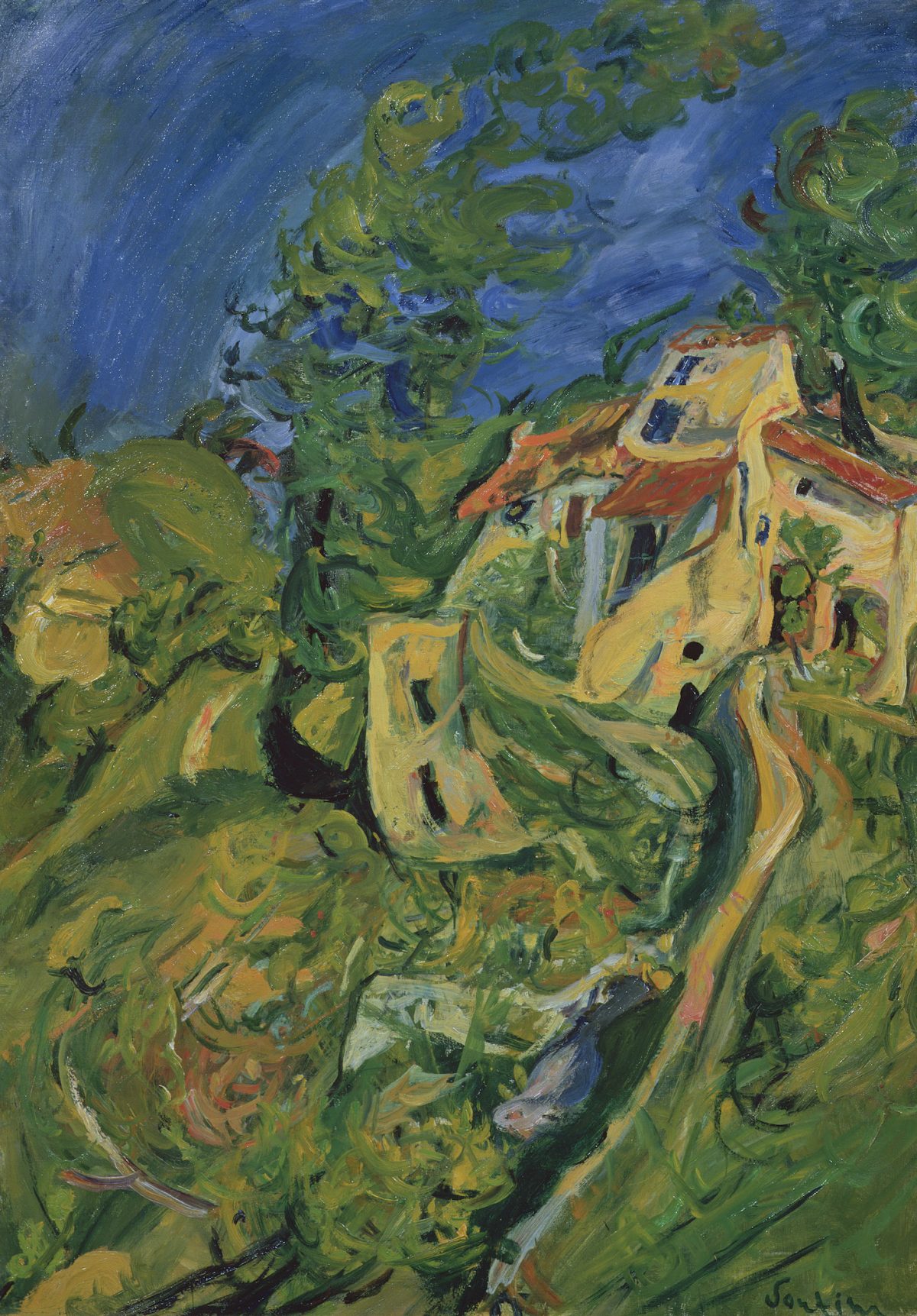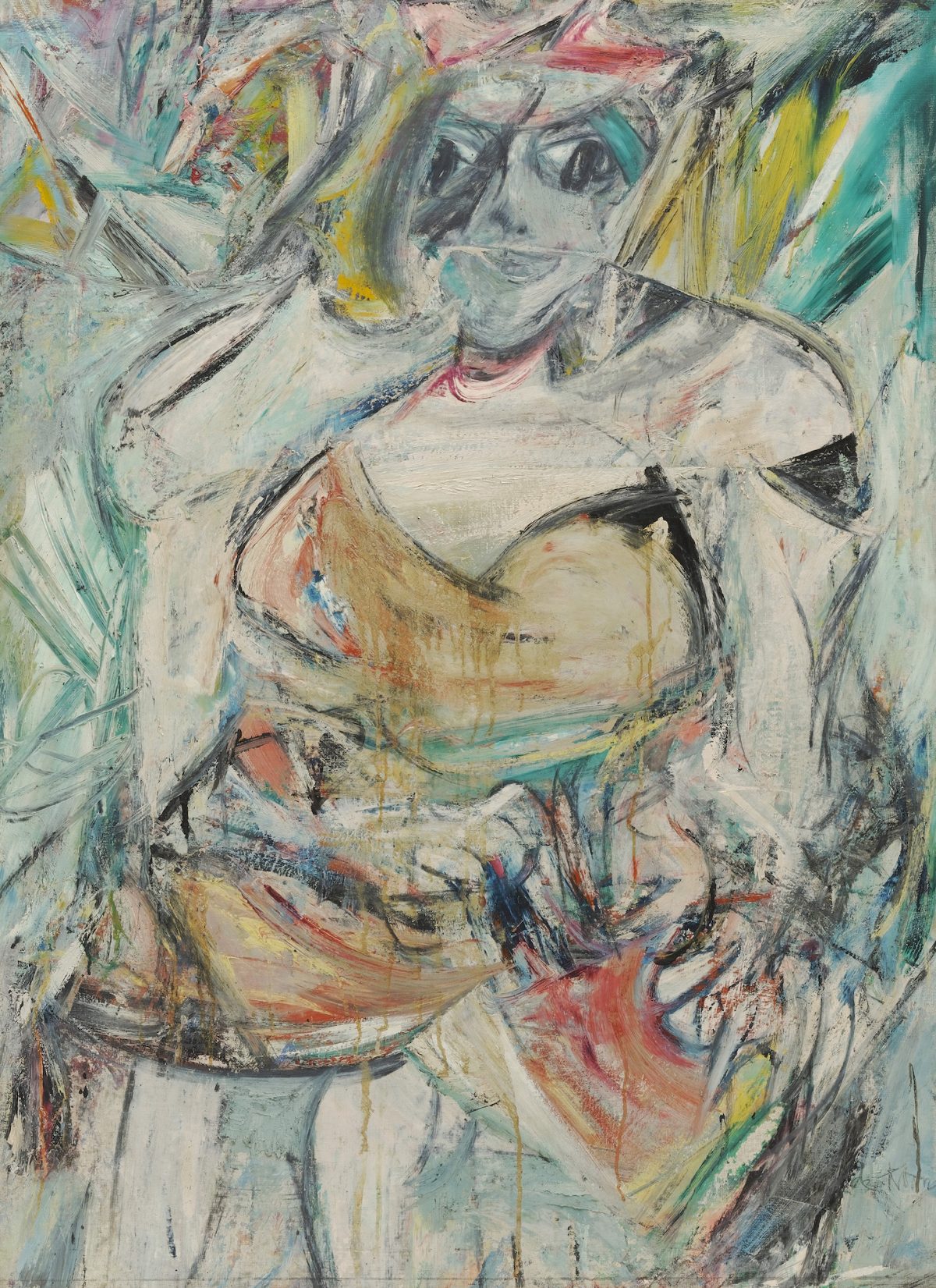

PHILADELPHIA — The exhibition Soutine/de Kooning: Conversations in Paint at the Barnes Foundation (March 7 – August 8, 2021), co-curated by Simonetta Fraquelli and Claire Bernardi, was the reason that I left New York for the first time since the city went under lockdown in mid-March 2020 and took a train, fully masked, to Philadelphia. While I had the exhibition catalogue, I decided not to look at it until after I had seen the show, which brought together 48 works, many of them key paintings in the artists’ development.
The exhibition is small but deeply engaging in the curators’ choices and alignments, which are enhanced by supplementary materials, such as a 1952 letter from Elaine de Kooning to Dr. Albert Barnes shortly after she and her husband had seen the more than 50 Soutines in Barnes’s collection, following the Museum of Modern Art’s landmark Soutine retrospective in 1950, which introduced New York artists to the breadth of this singular figure. It is telling that Elaine mentions Bill’s delight in seeing work by Jules Pascin, as it reminds us of the extent of his affections for, and engagement with, other artists.
As the Barnes Collection is preserved and presented almost exactly the way that Bill and Elaine would have seen it, viewers will look at the same works by Pascin and Soutine.

The one issue that I had with the presentation was that the wall labels never once mentioned cubism. The reason this bothered me was because Soutine’s tornado-like landscapes, glutinous paint, and unembellished brushstrokes showed de Kooning a way to leave the logic of cubism’s planar geometry behind.
Clement Greenberg, one of the most influential critics of the period, judged Soutine’s paintings as lacking “reassuring unity” and “decorative ordering.” He believed that Soutine’s indifference to the tenets of cubism doomed him to be a minor, inconsequential artist. But it seems to me that Soutine’s complete lack of interest in the cubists’ desire for order was exactly what appealed to de Kooning.
I would go further and say that Soutine showed de Kooning how to go past Vincent van Gogh, particularly the later expressionist paintings made of swirling brushstrokes.

In his paintings of the landscape around the Catalan town of Céret, Soutine’s brushstrokes twist and pressure space until everything threatens to break free. The structures in Soutine’s “Houses” (1920–21) are swaying this way and that, as if dancing to the music of the air.
Soutine’s sense that disorder is the foundation upon which reality is constructed pushes back against the implicit ideology of cubism, which is that there is an underlying order to everyday life. Soutine did not seem to have that sense of reassurance. One of the most analytically astute artists of his generation, de Kooning recognized that academic training and the mastery of a style would lull him into complacency. I think de Kooning cared far more about what Soutine did with the paint.
Another thing that de Kooning saw in Soutine was his dialogue with past masters, such as Rembrandt. Jackson Pollock threw everything out in order to go forward, but this was not de Kooning’s demon. In that sense, he was not interested in becoming an avant-garde artist. He was interested in being authentic to his predecessors rather the new, especially when others defined what was new and what was old.

In the exhibition’s pairing of Soutine’s portraits of the 1920s and de Kooning’s paintings of anonymous men and women from the 1940s, the choices are illuminating. Soutine’s “Grotesque (Self-Portrait)” (c. 1922–25) anticipates de Kooning’s interest in both the monstrous and ridiculous.
In Soutine’s work, de Kooning may have recognized that scandalous works need not be superficial or purely topical. If we focus on the changes that take place between de Kooning’s “Seated Woman” (c. 1940) and the later paintings on the same subject, “Woman” (1944) and “Queen of Hearts” (1943–46), we see the turn toward the grotesque, as well as the deliberate distortion of the female body, such as the outlined shapes of egg-like breasts, which recall early Renaissance depictions of the Madonna feeding the infant Jesus.
In these paintings, de Kooning’s preoccupation with contour lines — inspired by Ingres — and his articulation of the figure within a flat, cubist space became the wall he wanted to break through. De Kooning was driven to surpass what he knew; he wanted to break down the figure-ground relation and get beyond edge and line. He was not interested in the formalist theories of Greenberg or the existentialism of Harold Rosenberg. Some of his paintings, starting in the 1940s, remain unsettling because it is hard to say what he is getting at in his depictions of women, especially if we approach them without an agenda and grant that perhaps he did not have one either.

I would say there is one important difference between Soutine’s portraits and de Kooning’s figure paintings. Soutine was sympathetic to his figures, many of whose occupations revolved around making other people’s lives more comfortable — something he was not interested in doing. I think that de Kooning was in agreement with Soutine on this the issue, and that he too wanted to be in touch with his inchoate feelings, something that felt more genuine than experimenting with paint-as-paint or pure abstraction. Neither of them was interested in behaving properly. They didn’t want to be valets or clowns.
De Kooning famously said: “Flesh is the reason oil painting was invented.” His hedonistic view goes against the tradition of Renaissance painting that celebrates suffering and shame, while focusing on horror, beginning with the expulsion from the Garden of Eden. Soutine’s relation to flesh and sensuality was more complicated and haunted. De Kooning’s fleshy pinks and comically hideous nudes are not Soutine’s bloody reds and hanging carcasses.
This exhibition opened up a lot of doors in my mind. I began remembering work by them that I had seen many times in different situations, from the Barnes Collection to the Musée de l’Orangerie to the Metropolitan Museum of Art and the Museum of Modern Art in New York, where I have seldom seen a Soutine. According to the MoMA website, none are currently on view.
When I got back to New York, I began reading the catalogue Soutine/de Kooning: Conversations in Paint (2021), edited by the curators, with contributions by Sylvie Patry, Judith Zilczer, and Lili Davenas. Every essay was an instructive delight to read. It reinforced my belief that the emphasis on originality and its death neglected a more central question of art: How does one establish a conversation with other artists, both living and dead?

Soutine/de Kooning: Conversations in Paint continues at the Barnes Foundation (2025 Benjamin Franklin Parkway, Philadelphia, Pennsylvania) through August 8.
0 Commentaires